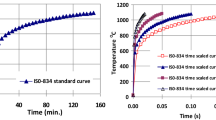Abstract
The single-degree-of-freedom (SDOF) analysis with elastic-plastic resistance is often used for design of protective structures subjected to blast loads. Several documents such as UFC 3-340-02 present design charts for the maximum responses of the elastic-plastic SDOF system. The SDOF design charts are available for far-field detonations but seldom for near-field detonations of high explosive in free air, noting that the focus of security design is the near-field. Further, the assumption of uniformly distributed load for the SDOF analysis may not be appropriate for the near-field detonations where blast pressure distribution varies significantly with distance and angle of incidence. In this paper, to resolve these issues, updated SDOF design charts including the response to the near-field detonations are suggested based on numerical calculations. These generated charts are verified with comparison to UFC 3-340-02 predictions and finite element analysis results of steel components. The recommendations and limitations for the utility of the SDOF design charts for blast assessment of steel components are provided with an emphasis on the near-field detonations.
Similar content being viewed by others
References
ASCE Task Committee on Blast-Resistant Design (2010). Design of blast-resistant buildings in petrochemical facilities, 2nd Ed. Americal Society of Civil Engineers, Reston, VA.
Baker, W. E. (1973). Explosions in air, University of Texas Press, Austin and London.
Belytschko, T. and Bindeman, L. P. (1993). “Assumed strain stabilization of the eight node hexahedral element.” Computer Methods in Applied Mechanics and Engineering, Vol. 105, No. 2, pp. 225–226, DOI: 10.1016/0045-7825(93)90124-G.
Biggs, J. M. (1964). Introduction to structural dynamics, McGraw-Hill, NY.
Chopra, A. K. (2012). Dynamics of structures: Theory and applications to earthquake engineering, 4th edition, Prentice Hall, Upper Saddle River, NJ.
Cormie, D., Mays, G., and Smith, P. (2009). Blast effects on buildings, 2nd Ed. London: Thomas Telford.
Department of the Army, Navy and Air Force (1990). Structures to resist the effects of accidental explosions (with Addenda), Army Technical Manual (TM 5-1300), Navy Publication (NAVFAC P-397), Air Force Manual (AFM 88-22), Revision 1. Washington, DC.
DoD (2008). Unified Facilities Criteria (UFC): Structures to Resist the Effects of Accidental Explosions (UFC 3-340-02). Departments of Defense, Washington, DC.
Dusenberry, D. O. (2010). ed. Handbook for blast-resistant design of buildings, Wiley, Hoboken, NJ.
Jones, J., Wu, C., Oehlers, D. J., Whittaker, A. S., Marks, S., and Coppola, R. (2009). “Finite difference analysis of simply supported RC slabs for blast loadings.” Engineering Structures, Vol. 31, No. 12, pp. 2825–2832, DOI: 10.1016/j.engstruct.2009.07.011.
Hyde, D. W. (1992). ConWep: Conventional weapons effects (Application of TM 5-855-1), US Army Corps of Enigneers, Waterways Experiment Station, Vicksburg, MS.
LSTC (2013). LS-DYNA keyword user’s manual Ver. R7.0. Livermore Software Technology Corporation, Livermore, CA.
Norris, C. H., Hansen, R. J., Holley, JR. M. J., Biggs, J. M., Namyet, S., and Minami, J. K. (1959). Structural design for dynamic loads, McGraw-Hill, New York; Toronto; London.
Shin, J., Whittaker, A. S., Aref, A. J., and Cormie, D. (2014). Air blast effects on civil structures, Technical Rep. No. MCEER-14-0006, Multidisciplinary Center for Earthquake Research, Univ. at Buffalo, Buffalo, NY.
Shin, J., Whittaker, A., and Cormie, D. (2015). “Incident and normally reflected overpressure and impulse for detonations of spherical high explosives in free air.” Journal of Structural Engineering, Vol. 141, No. 12, 04015057.
Smith, P. D. and Hetherington, J. G. (1994). Blast and ballistic loading of structures, Butterworth-Heinemann, Oxford; Boston.
Author information
Authors and Affiliations
Corresponding author
Rights and permissions
About this article
Cite this article
Shin, J., Lee, K. Blast performance evaluation of structural components under very near explosion. KSCE J Civ Eng 22, 777–784 (2018). https://doi.org/10.1007/s12205-017-1889-7
Received:
Accepted:
Published:
Issue Date:
DOI: https://doi.org/10.1007/s12205-017-1889-7




